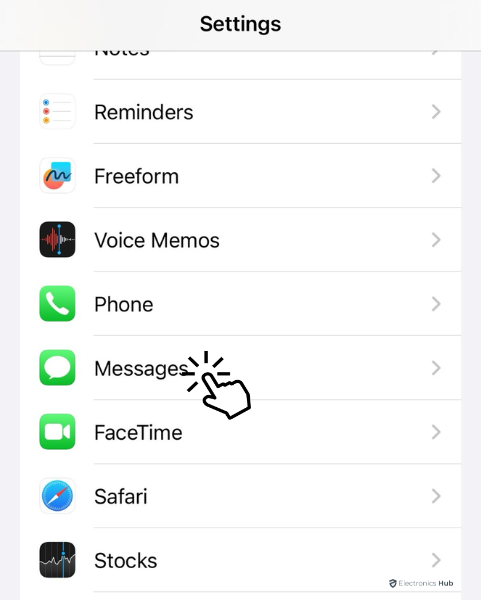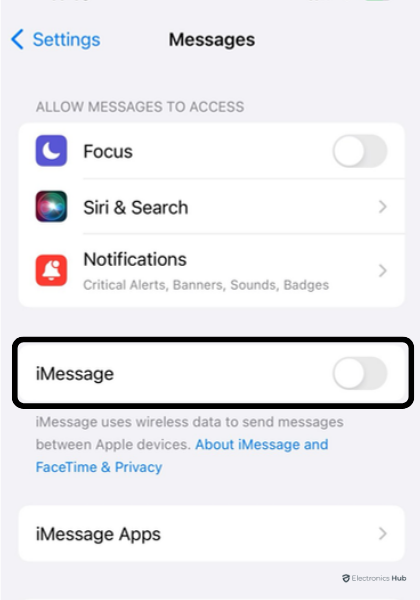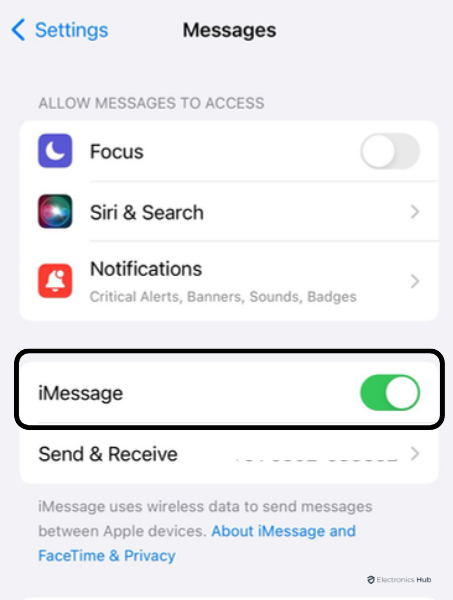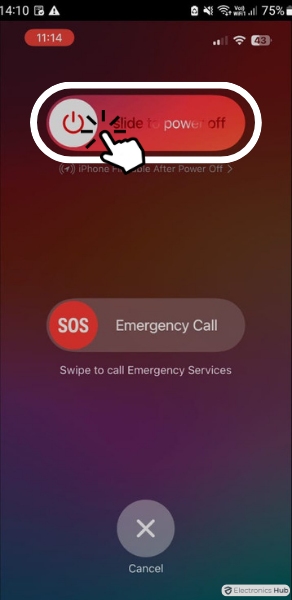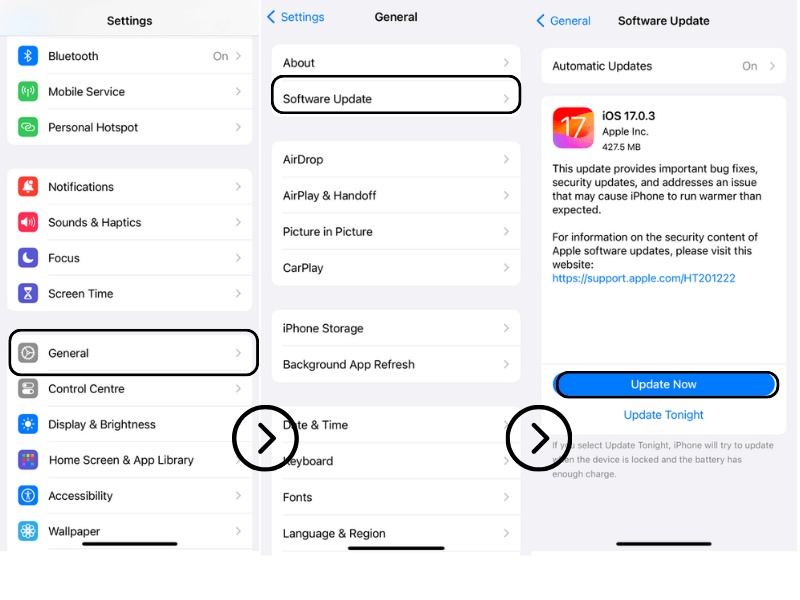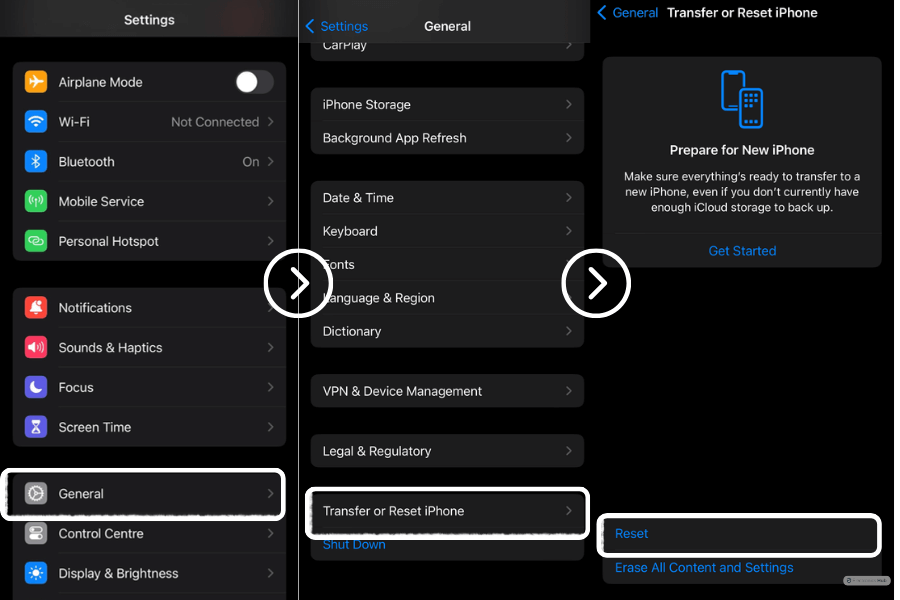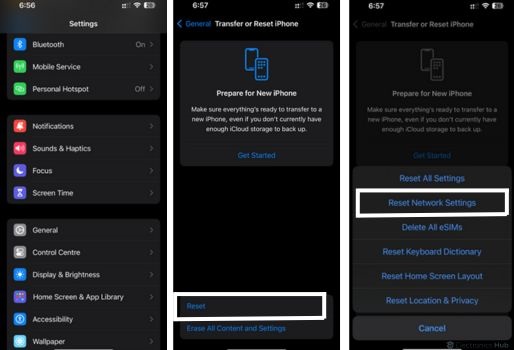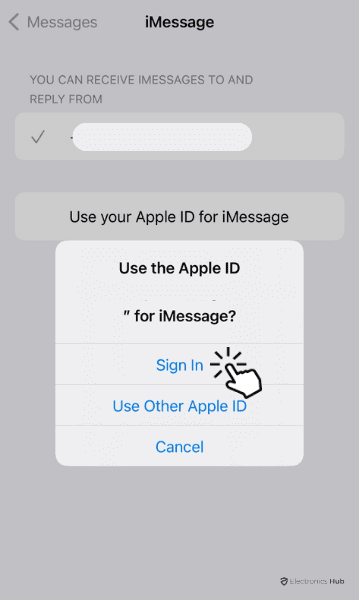iMessage issues on iPhones can manifest in various ways, from messages not sending or receiving to contact names and pictures not displaying correctly. If you’re facing such challenges, follow these steps to troubleshoot and resolve the problem:
Outline
ToggleReasons Why iMessage Is Not Working?
There are multiple reasons why iMessage on your iPhone is not working. It could be an issue with iMessage server, iMessage app, or even your iPhone or iPad whichever you are using. Here is the list of all the possible reasons –
1. Problem With Your Apple Device(iPhone, iPad, Mac) –
iMessage needs a data connection to send or receive messages. Therefore, if your Apple device does not have an active data connection, iMessage won’t work. Hence, make sure your mobile data is turned on and that your data pack has not expired. If a nearby Wi-Fi connection is available, turn off your mobile data and connect to that Wi-Fi network, and see if iMessage works. If it does, then there is an issue with your data connection.
If a Wi-Fi connection is not available, you can open the web browser on your device and open a website to see if the internet connection is perfect. Moreover, make sure you do not have Airplane Mode turned on due to which data connection cannot be established.
2. iMessage App Issue –
When iMessage is not working, you have to make sure that iMessage is turned on. Go to Settings> Messages and see if iMessage is turned on. You or someone else could have turned it off by mistake. Moreover, go to Settings> Messages and ensure your phone number is correctly set to send or receive messages.
It is also possible that you have too many messages stored on your iPhone, and your iPhone’s storage is full. The app cannot download or receive any further iMessages, which is why it is malfunctioning. In such a scenario, check your iPhone storage, and you can delete some iMessages manually to fix the issue for the time being.
Another possible scenario is that you might not have updated your iOS for long. There is always a possibility for an older version of iMessage to malfunction, so you should always update iOS wherever available.
3. iMessage Server Is Down –
Lastly, it is not often that you find news of iMessage servers being down but there have been such rare cases in the past. Therefore, you can check on social media platforms and even call up your friends to check if iMessage is working for them or not. If there is a problem with iMessage server, everyone must be facing the same issue.
How To Fix My iPhone iMessage isn’t Working?
There could be several reasons why iMessage on your iPhone is not working. Here are some common troubleshooting steps you can take:
1. Check iMessage Settings
To begin troubleshooting, ensure that your iMessage settings are correctly configured on your iPhone. Here’s how:
- Open the Settings app on your iPhone.
- Scroll down and tap on “Messages.”
- Toggle the iMessage switch to turn it off, wait a few seconds, then toggle it back on.
If iMessage is already enabled, try toggling it off and on again to refresh the connection. This simple step can sometimes resolve minor glitches with iMessage.
2. Restarting and Updating iPhone
Sometimes, a simple restart can work wonders in resolving iMessage issues. Follow these steps to restart your iPhone:
- Press and hold the power button until the “slide to power off” slider appears.
- Slide to power off, wait a few seconds, then turn your iPhone back on.
Additionally, ensure your iPhone has the latest software updates installed:
- Open the Settings app.
- Go to “General” and select “Software Update.”
- If an update is available, tap “Download and Install.”
Updating your iPhone’s software can address compatibility issues and improve overall system performance.
3. Resetting Network Settings
Resetting network settings on your iPhone can resolve underlying issues affecting iMessage. Keep in mind that this action will also reset Wi-Fi passwords and cellular settings. Here’s how to do it:
- Open the Settings app.
- Go to “General” and select “Reset.”
- Tap “Reset Network Settings” and enter your device passcode if prompted.
- Confirm the action by selecting “Reset Network Settings.”
Once your iPhone restarts, check if iMessage is functioning correctly. If not, proceed to the next troubleshooting step.
4. Checking Network and Connection
A stable network connection is crucial for iMessage to function properly. If your iPhone is connected to the internet but iMessage is still not working, follow these steps:
- Ensure Wi-Fi or cellular data is enabled on your iPhone.
- Check if other apps requiring internet connectivity are working.
- Test iMessage on both Wi-Fi and cellular data to identify if the issue is specific to a particular network.
5. Checking Apple System Status
Before diving deeper into troubleshooting your iPhone, it’s wise to check the status of Apple’s servers. If there’s an ongoing issue with iMessage on Apple’s end, it might not be something you can fix individually. Follow these steps to verify the system status:
- Visit Apple’s System Status page on your web browser.
- Look for “iMessage” on the list of services. If it’s marked in green, the service is operational. If there’s a yellow or red dot, Apple might be experiencing issues.
If iMessage appears unaffected on Apple’s end, proceed to the next step. If there’s a system-wide problem, you may need to wait until Apple resolves it.
6. Contacting Apple Support
If none of the previous steps have resolved your iMessage issues, it’s time to seek assistance from Apple Support. Apple experts can provide personalized guidance based on your specific situation. Here’s how to get in touch:
- Open the Apple Support app or visit the Apple Support website.
- Choose your device and navigate to the iMessage section.
- Select the issue you’re experiencing, and follow the on-screen instructions to connect with Apple Support.
Alternatively, you can schedule an appointment at an Apple Store or authorized service provider. They can run diagnostics on your device and offer in-person assistance.
7. Sign Out Of iMessage and Then Sign Back In
Go to Settings> Messages and tap on Send & Receive. Tap on Apple ID and opt for Sign Out option. Thereafter, you should sign back in with your Apple ID and send if this solves your iMessage issue.
Step 6. Update iOS If Available
We have already stated that if iOS is not updated, iMessage can malfunction. To check and update iOS, go to Settings> General> Software Update. Apple sends out iOS updates to fix any issues that Apple users may face from time to time. If an update is available, take a backup of your data and go for the update. When you update iOS, you should be connected to a Wi-Fi connection.
What Are The Green Speech Bubbles and Blue Speech Bubbles On iPhone?
When you open iMessage app on your iPhone, you will come across two types of sent messages. Some of them have blue speech bubbles while others have green speech bubbles. If messages are in a blue speech bubble, this means that the messages were sent via iMessage using the internet. If the messages are in a green speech bubble, this means that the messages have been sent using a cellular network like SMS.
Conclusion
By following these troubleshooting methods, you can ensure seamless communication through both iMessages and regular texts, while also ensuring that contact names and pictures appear correctly in your messages. If you encounter persistent issues, don’t hesitate to reach out to Apple Support for further assistance.

